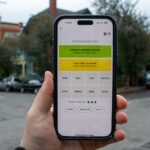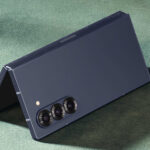The cashless society has made paying for stuff a lot more convenient for many folk. But there’s also been another benefit that you may not have thought of — a dramatic reduction in the number of children swallowing coins or sticking them up their nose.
With fewer coins around the home these days due to the growing adoption of digital payments, children are far less likely to pop one into their mouth, an act that in some cases can result in a trip to the hospital.
Analysis published recently in The Annals of the Royal College of Surgeons of England journal and reported on by the Associated Press, found a notable drop in the number of children in England requiring hospital procedures to extract objects from throats and other airways.
The researchers examined hospital data in England gathered over 22 years from 2000, focusing on objects removed from individuals aged up to 14.
The data showed a “significant decline” in removals from 2012 — the same year that contactless payments really began to take off in the U.K.
Over the following 10 years until 2022, the researchers noted a 29% drop, from 2,405 cases in 2012 to 1,716 three years ago.
“Our research shows that using cashless payment methods instead of coins has potentially helped keep children safe and reduced the need for surgery,” said Akash Jangan, the study’s lead author. “This unintended finding proves that changes in how we live can make a difference to people’s health.”
While the study’s findings are of course to be welcomed, it’s important to keep in mind that other hazardous items still exist for curious children whose first response when grabbing anything new is to stick it in their mouth.
Indeed, with the growing use of gadgets over the years, coins have been replaced by things like button batteries as a potential hazard. Other common items that children have a habit of ingesting include things like jewelry, nails, marbles, and toys, or parts of toys.
A study conducted by a children’s hospital in the U.S. that looked at data across a 20-year period revealed that in the U.S., pennies were the most commonly ingested coin. Quarters were the second most common, with its larger size resulting in a greater chance of hospitalization among the children who swallowed one.
Read the full article here















